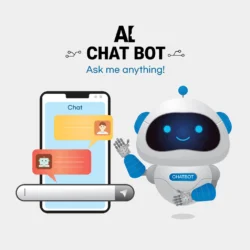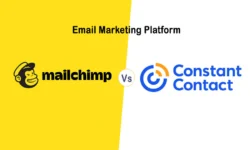You write every single post, half of which are a guess, right? There are posts that take off, there are posts that sink, and it is difficult to say why when someone is inquiring as to what is actually working. It is there where social media analytics comes in, which is actually merely tracking what comes after you press publish, who views, who clicks, and who purchases.
The issue is that nowadays there is too much information that cannot be sorted out by a single individual. AI performs the job of a clever assistant that will analyze all those numbers within minutes, detect patterns across platforms, and emphasize the things that the majority of people would overlook.
Making your reports more understandable, your insights more rapid, and your choices more valuable are only a few of the ways through which AI can help you in this post. You will also be able to enlarge reach and increase engagement, and connect your social media to actual sales, without investing more time in your week by the end.
What Is Social Media Analytics, And Why Is It Important To Grow
Social media analytics tracks the reactions after you publish a post and turns those responses into useful insights. Instead of guessing which content worked well, analytics gives you clear data, such as views, likes, clicks, comments, shares, and even sales. However, this works best when you have enough information to analyze. Creators can use Riselikes to boost early engagement, giving their posts the visibility needed to understand their performance better. With this early push, you can attract the algorithm’s attention more easily and reach a wider audience faster.
Once you establish this initial visibility and start receiving data, regular analysis becomes powerful. When you regularly review your performance, social media transforms from feeling like a gamble into a system you can improve. You discover what grabs attention, which formats keep viewers engaged, and which calls to action direct people to your website or store. This knowledge allows you to focus on successful strategies and reduce efforts on those that don’t work.
Small improvements add up. A slight increase in click-through rate, a bit more reach, or even a few additional saves can create steady traffic and long-term growth. Social media analytics guides you to:
- Focus on the content that drives leads and revenue
- Communicate in a way that resonates with your audience
- Invest time and resources into the channels that deliver results.
In short, analytics turns social media from noise into a meaningful feedback loop—one you can use to grow with intention and clarity.
Key social media metrics that show what is working
The most useful social media measures include attention and action. On the most fundamental level, you have reach (how many people looked at your piece of content) and impressions (how many times it was displayed). Then there is the engagement rate, which scores up likes, comments, shares, and saves, and displays the level of reaction of people. Click-through rate gives you information on whether your posts are transferring traffic, and conversion metrics will give you information on what happens once the click, which will be sign-ups or purchases. These numbers combined will show what exactly your business is being driven by.
Averages of issues with manual tracking of social media
It might seem easy to follow social media manually, but once you start across platforms, you realize it is not as easy as it sounds. You are skipping dashboards, typing up numbers in spreadsheets, and attempting not to confuse dates or posts. It is time-wasting, human error-prone, and it makes it challenging to maintain clean and consistent data. When the accounts begin to expand, it becomes difficult to compare the volume of posts and measures in weeks or months. It is also more difficult to identify patterns, such as what content themes or posting times work consistently better with manual tracking.
How AI Supercharges Social Media Analytics For Faster Insights
Artificial intelligence is providing the ability for social media analytics to go from being slow to reactive, to fast to valuable. AI does not require thousands of dashboards, exports, and screenshots to extract the relevant story from the noise of social media posts. Rather, it processes thousands of posts, comments, clicks, and conversions in real time and provides insights into what is really important to you. Users are no longer forced to guess what works and instead see definitive trends for their content, who their audiences are, and when they should be posting.
The actual power is in the timing. AI can analyze social media data in real-time on multiple platforms, which enables the detection of shifts in social media performance and identification of trends before they become evident, rather than weeks later. This fast pace allows for more experimentation, quicker responses, and the opportunity to adjust campaigns while they are still running. Users can adjust budgets, change creative content, and modify their posting schedules without having to wait for a monthly report. The result is improved accuracy. AI is also regular, does not get weary, and does not forget to search by date and channel. It is able to tie together data that is difficult to do manually, such as comments, sentiment, and conversions, to provide you with a more holistic view of what is working. In the long run, it helps to learn what success would be like for your brand and assists you in identifying it sooner. Speed and clarity are difficult to beat in the eyes of a marketer who desires growth.
AI that turns raw numbers into clear, simple insights
A translator of incoherent data to distilled insights through the use of AI tools; rather than looking at a sea of raw data, utilize AI tools to create meaningful summaries that highlight which posts generate saved content, when your audience engages, and which topics drive sales. Furthermore, utilize AI to categorize like content, compare performance results, identify anomalies, and allow managers to make informed decisions around future direction. As such, using AI to communicate outcome results internally, defend marketing strategy, and assist in determining future course of action is greatly enhanced.
Content performance prediction before you post
Using AI, you can see, fairly accurately, how well a post will perform (before it’s posted). These predictions—based on your past performance, your audience’s behaviours, and what is being used on the platforms you’re posting to—can forecast the reach, engagement level, and even the likelihood of generating click-throughs. Using an AI tool, you can try out different caption options or visuals for your post to see which one will likely perform best. This removes the guesswork from the process, allowing you to eliminate poor-quality concepts prior to posting and increasing the chances of creating content that resonates with your audience.
Smarter audience and trend analysis
AI is able to look beyond an archive of events that occurred — it is also able to determine the reasons behind an individual’s responses. Using the same methodology, AI can identify audience groups based on their interest level and/or their behavior/value. Audience segments that display similarities can then be compiled into one group (or category), allowing AI to determine how those audience segments respond to specific pieces of content based on the methods used to compile and evaluate them. Additionally, through the continued use of artificial intelligence, you will be able to monitor the use of keywords, hashtags, and patterns of engagement to help identify early trends in a specific niche. Being aware of early trends will help you prepare and make use of those trends before competitors do.
Practical Ways To Use AI For Data-Driven Social Media Growth
AI works best when it fits into what you already do on social media. Think of it as an intelligent assistant that watches your posts, ads, and comments, then taps you with clear next steps. Use AI tools to scan past data and spot patterns that drive growth — better posting times, stronger hooks, and ideas that match what your audience already likes. Start simple: have AI analyze your top posts and flag common elements like topic, format, length, or call to action. Use those patterns to shape your next batch of content. Let AI draft captions, test different versions, and predict which headlines or video covers might get more clicks. You can also connect AI to your DMs and comments to sort common questions, spot unhappy customers, and track what people ask for most. Over a few weeks, these little tweaks add up. You spend less time guessing and more time on content and offers that actually move numbers. Leverage AI as a feedback loop, to learn and get better with each post, not as a shortcut or replacement for your voice or ideas.
Use AI to find your best posting times and formats
AI programs examine your posting history on each platform, then compare that with engagement and reach. Rather than playing a guessing game about when your audience is scrolling, the tool generates time windows in which likes, saves, and clicks peak. Many tools also compare formats — Reels, carousels, or single images — to see what interests people. Then create a simple schedule around those proven times and formats, so each post has a stronger footing to land.
Let AI suggest content ideas based on past wins
AI can review your best-performing posts and find the themes that provoke your audience. It examines subjects, hooks, keywords, and visuals and recommends fresh angles that fit those patterns. You can feed it your most popular posts and request fresh ideas, scripts, or caption starters. This keeps your content strategy anchored to what has been successful in the past but encourages experimentation with new stories and formats.
Improve ad results with AI-powered audience and creative insights
AI enables you to run smarter ads — by revealing who really responds, and why. It can segment your audience by behavior and interests, and show you which of those segments has the best click or purchase rates for you. Creatively, AI tools compare headlines as well as thumbnails and ad copy to identify what is leading toward cheaper results. You can test at a much greater speed, cut weak ads early, and keep a budget on the ones that work — including which messages and audiences they can take them to.
More advanced natural language processing for better understanding
So much social data is text — comments, captions, DMs, and reviews. If you’re paying attention only to likes and clicks, you miss the real narrative buried in those words. Advanced natural language processing (NLP) allows AI to read that text at scale, and then transform messy conversations into actionable insights.
But instead of scanning comments by hand, you get clear pictures of how people are feeling, what they need, and what they’re most upset about.
How NLP turns raw comments into clear insights
NLP helps AI to read social content as humans do. It is able to scan posts, replies , as well as mentions, and group them based on themes such as product problems, feature requests, or content ideas.
A solid NLP system can:
- Clean and standardize the text (“squad” as well as “Squad,” emojis, misspellings, and other variations all count).
- Real-time tag for topics such as pricing, shipping, or support.
- Notice trends on the platforms, not just within one channel.
Advances in NLP for richer sentiment and context
Modern NLP lets AI actually understand social posts instead of just slapping on a “positive” or “negative” label. Now it picks up on sarcasm, mixed emotions, and even how someone’s mood shifts as a conversation goes on. So it knows when someone’s joking around versus when there’s a real problem. It can also follow side comments, replies, or quote tweets to figure out what started a reaction in the first place. You end up with a much clearer sense of how people feel, what’s driving those feelings, and how things change as the conversation unfolds.
Make sense of how people actually feel—across every corner of your social world
When you let NLP dig through all your channels, you don’t have to guess what’s going on with your audience. You spot real trends by channel, campaign, product line, or even by audience segment. Suddenly, you know if your new followers are more upbeat than your long-time fans, or if that last ad built trust or stirred up doubts. NLP doesn’t just track feelings—it catches intent, too. You’ll know who’s itching to buy, who needs a hand, and who’s ready to walk away. When someone says, “I’m ready to switch,” or asks, “How do I upgrade?” your team can jump in right then and help them take the next step. No more waiting around or missing signals.
Making decisions in real time, instead of after the fact
Real-time AI analytics flips the script. Instead of waiting around for a weekly report, you get a live dashboard. You see comment spikes, falling click rates, or a flood of mentions the moment they happen. That speed means you can jump on fresh trends, pull the plug on underperforming ads, or get ahead of trouble when a post goes sideways. You’re not just keeping up—you’re setting the pace, steering the conversation while it’s still moving, and keeping your reach and reputation intact.
Jumping on trends, handling crises, and tracking shifts as they happen
Social Trends do not wait for you to catch up. When keywords, hashtags, and other topics explode, AI tools will notify you immediately when there are increases in activity surrounding those items. You will be able to participate in the discussion surrounding new memes and breaking news, and identify potential customer pain points while they are still in the process of building momentum. These tools will alert you to surges in negative sentiment about your product or service via DM or quoted tweets. You can respond with an apology, a solution, or customer support before minor issues become major issues. You can also monitor gradual declines in loyal consumers or viewers of your content, so you can make necessary adjustments before it starts to have an impact on your business.
Setting up real-time AI alerts that actually matter
When using real-time analytics, you can only benefit from that data if the alerts generated are intelligent about what information to provide you with. Avoid reacting to every single fluctuation; instead, focus on identifying a few key signals that correlate very closely with your business performance – such as engagement rate, cost per ad result, brand mentions and ratio of positive vs negative comments – and set alerts for significant shifts in performance, like a 30% decrease in ad performance or a sudden increase in brand mentions. Keep the alerts relevant and meaningful to you, to help eliminate distractions and provide you with actionable items.
More automation, but you still need real people
Artificial Intelligence does most of the mundane tasks (such as creating reporting documents, tagging posts, and identifying trends when they happen on the internet) so that you can spend more time working on the bigger picture and less time doing repetitive tasks like copying and pasting. The downside of this approach is allowing the automation to “take over” and lose your voice as a brand; therefore, you must still have humans involved in the process. You establish the strategy, approve the guidelines, and can identify any red flags when it doesn’t feel right, as well as share the story behind the numbers. That’s what ensures that your content stays creative, authentic, and accurate to your brand.
Conclusion
Social media analytics are easy to access through artificial intelligence (AI). Companies can concentrate more on the relevant metrics and receive reports that provide actionable insights. This capability provides valuable insights into trends and validates hypotheses prior to publishing. By utilizing AI, organizations can better assess their reporting and ROI tracking and demonstrate their value to both their budget and the tools they selected. With AI, there will be minimal headaches involved with utilizing this technology. By viewing AI as a means to enhance an organization’s existing human resources, rather than replace them, organizations have the ability to create stronger companies that showcase human talent and creativity while allowing employees to rely on their judgement, judgment and creative instincts for differentiation. The businesses that gain traction will use smart data in conjunction with a consistent brand voice to create attention-grabbing content. Use AI to develop a strategy, but ultimately, the human touch adds a valuable element to the brand’s overall story.







